Each year as fishing season starts, I refer back to my freshwater tackle box checklist to make sure I am prepared. Use this checklist to ensure that you have everything you need before heading out to your secret fishing hole. So, I am betting you might wonder what to put in your tackle box.
There is a wide range of gear that needs to be considered but, for me, it varies on what type of fish I am looking to catch. It also comes down to your personal preference. My muskie tackle box checklist is different than my large mouth bass tackle box checklist.
Nonetheless, every tackle box checklist should come with some basic items. So here is our simple tackle box checklist.
What to Put in Your Tackle Box: The Basic Gear
1. Extra Hooks

There are all kinds and sizes of fishing hooks for catching various types of fish. The smallest hook is numbered 32 while the largest one is 20/0.
The slash symbol ( / ) defines a hook as grouped within the “aught” measurement system. As defined in aughts, the higher the number, the larger the hook. For example, a 1/0 hook is bigger than a size 1. They ascend in accordance to their increased size. Therefore, a 8/0 hook is larger than a 6/0, but a plain 8 is smaller than a 4. Clear as mud no?
It is important that your tackle box has an appropriate assortment of hooks in different sizes since you can’t use a large catfish treble hook for crappie.
2. Extra Line

When you go fishing, there’s a very good chance that your fishing line is going to get tangled or broken. You will also need a stronger line (higher weight) for fishing in difficult conditions or for larger fish.
There are multiple types of fishing line: braided, mono-filament, and fluorocarbon. What you need depends on the type of fish you are pursuing. Here is our recommended chart.
3. Sinkers/Weights/Swivels
The hook and bait are not enough to sink very deeply to get to the deeper fish. You will need a so-called sinker to add weight to your rig to get it at the depth where the fish are located.
A sinker is usually made of lead, but are slowly being banned in many states due to environmental concerns. As such, you will find sinkers that are made of are tungsten, brass, and steel. You can even make your own sinkers and weights.
Swivels are also important to help keep your line from getting twisted and is also used to keep your sinker a fixed distance above your bait.
4. Bobbers/Floaters
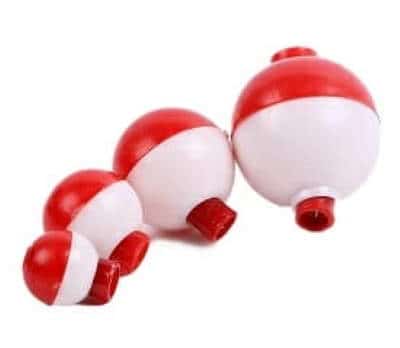
Floaters or bobbers are usually red-and-white plastic ball that goes under the water when a fish takes the bait. Nevertheless, there are other kinds of bobbers but their purpose is to help you to know when to set your hook and reel in your catch. The most common ones can easily clip onto your line but really just about anything that floats can affixed to your line and used as a bobber.
The oldest kind of bobber is a piece of cork with a stick. You can simply tie onto your fishing line, and you’re ready for fishing. Most people just starting with fishing and young kids benefit from using a bobber. It makes it easier to see when you bait is being taken by the fish.
5. Plastic Worms/Lures

While live bait is preferred by most fishermen, there are places where live bait is prohibited. As such, having fishing lures or plastic worms around is always helpful. Lures come in a plethora colors,shapes, and sizes. The easiest to use is a rubber worm with a long tail threaded into the hook. .
There is an old fisherman’s superstition that a specific color increases your luck for successful bites. Not really true, the general rule of thumb is the darker/muddier the water, the lighter the color on the lure. As the water is darker, the brighter color is easier for the fish to spot.
However, in clearer water, it is better to use softer and more natural colors. Fish visibility is greater and the more natural, the better the chance of it taking the bait.
6. Muti-Tool/Pliers/Knife
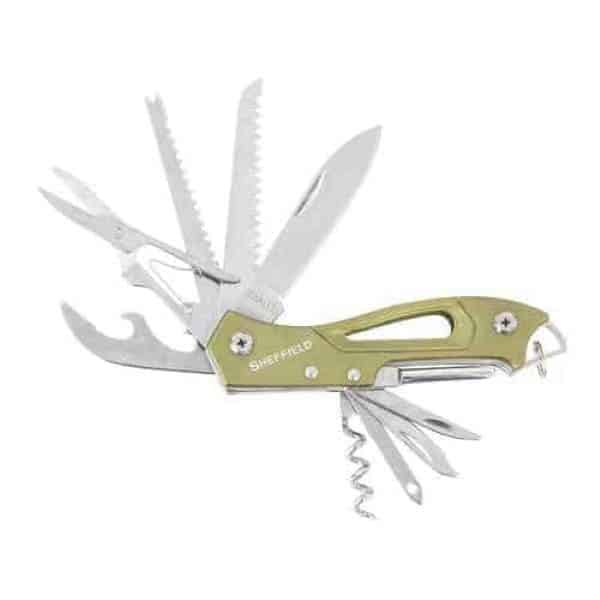
The multi-tool serves many purposes. It is used to take the hook out of the fish’s mouth, cut line, re-align hooks or just helping with minor repairs. Therefore, I always include one inside my tackle box.
There plenty of times when your line gets tangled or you get a snag, and your only choice is to cut the line. To do so, you need a small pocket knife or a pair of nail clippers. The latter does the job more conveniently and efficiently than a pocket knife. Most modern multi-tools have all of these parts included.
7. First Aid Kit/Sunscreen/Lip Balm

Safety first! You do not need an extensive first aid kit. My kit is a small bag that contains bandages, gauze band-aids, medical tape, and Neosporin. The most important thing to remember is to use a waterproof/resistant zip lock bag to store your first aid equipment.
When you go fishing, you are probably going to be under the sun all day. To protect your skin from the harsh UV rays and prevent it from getting sunburnt, apply some sunscreen. Seems like I always forget about putting some before you leave the house (yes, even with my wife reminding me), so keeping a bit of sunscreen inside your tackle box helps.
8. Sunglasses

Sunglasses are also important. They not only protect your eyes from the sun but they can also cut down on the reflective glare and allow you to see a bit deeper in the water and see that big fishing just sitting there waiting for you!
Make sure to check out our large selection of sunglasses.
9. Small Flashlight/Headlamp
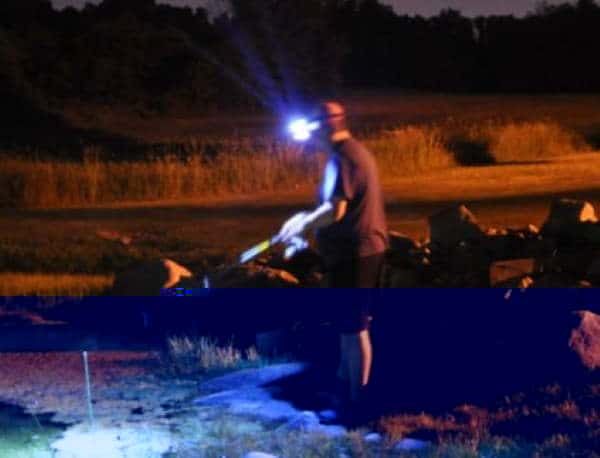
I have a headlamp in my tackle box. When the fishing are biting, I am not going home and they are helpful at dusk or for night fishing–especially when I need to bait my hook or fix up another rig.
Another added benefit is that while your game fish may not necessarily be attracted to the light, the bait fish are and, as such, they will draw in the game fish.
10. License
Just about every where I have fished (with the exception of the Amazon and some private land), I have always needed to bring my license along to avoid fines. It is the law in most places and is relatively cheap compared to the fine for being caught without one. Another trick I have been doing lately is taking a picture of my licenses on my mobile phone. That way if it gets lost, I have a backup copy somewhere that I can show the game warden.
Ultimate Tackle Box: Bonus Item Checklist
For ultimate and complete fishing experience, you might want to consider adding a few more items in the long run. Among these additional tools (if you have space) are the following:
Hook Hone
The hook hone or hook sharpener helps keep your hook sharp while you’re out fishing. In turn, a sharp hook will increase the likelihood of catching more fishes.
Fillet Knife
If you want to eat the fish right after you catch it, you should bring a fillet knife. Cleaning the fish is a difficult task, but using the proper knife will make it easier. Most of my trips are nearby so I just use a stringer and clean the fish at home or many times I am just catch and release. In those cases, I don’t need one. However, there are trips I take out in the mountains where I plan on eating my catch so I need a good sharp knife.
Measuring Tape/Scale

It is often illegal to catch a fish that is too small or too large. This is just simple conservation and is to protect the proper breeding sizes and ensure that there are fish for future generations.
Therefore, you need a measuring tape to check if you are following the legal size limits. You can also use it for measuring that monster fish that you caught for bragging rights (and make sure to add a few inches and pounds to it for a better story).
Conclusion for the Tackle Box Checklist
Whenever you decide to go on your fishing trip, make sure you get everything that you need in your freshwater tackle box. Prep work ahead of time, ensures that you will have a better time fishing. And who doesn’t want to have a better time fishing!
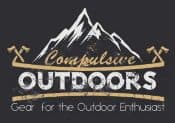
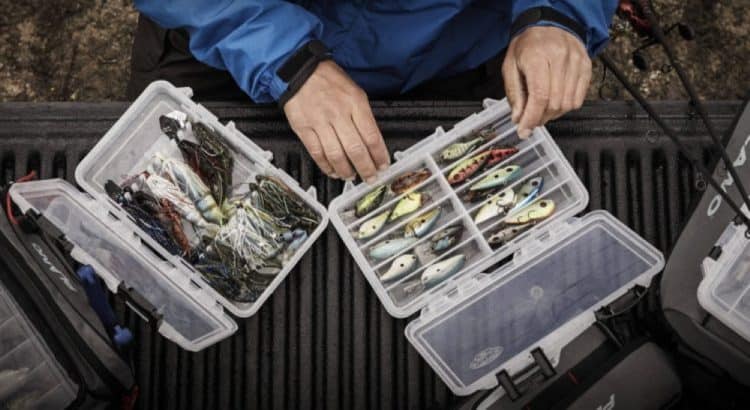



[…] are a few pieces of tackle that are going to be needed if you are going to spend any amount of time on the ice. Before we […]
[…] a fishing backpack allows you to carry all of fishing tackle such as line, bait, bobbers, swivels, hooks, and everything else you’d need on the trip. Along […]
[…] general, you don’t need to spend a lot on good ice fishing line, but it should be in your tackle box to some degree if you plan on hitting the […]